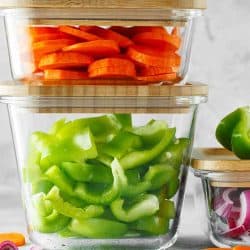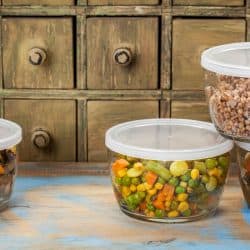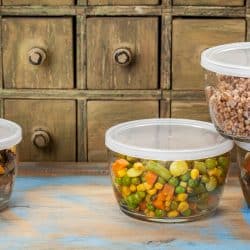Busy schedules can limit the time necessary for cooking meals, often leading to making larger portions of food at once to save for a later date. With large-scale preparation, you might wonder what containers are freezer safe to store food for the best flavor and freshness retention. We have done the research for you on whether the household staple, Rubbermaid containers, can be stored safely in the freezer.
You can freeze Rubbermaid containers by following the correct procedures. These containers are made from a durable material, both translucent and BPA-free, making it easy to safely store your food and see what is inside the containers.
There are a handful of different techniques for freezing different types of leftovers, such as stews, meats, vegetables, and fruits. By comparing multiple techniques and referencing the NDSU Food Freezing Guide, we’ve come up with the ins and outs of storing food in the freezer. Please, keep reading to learn more!
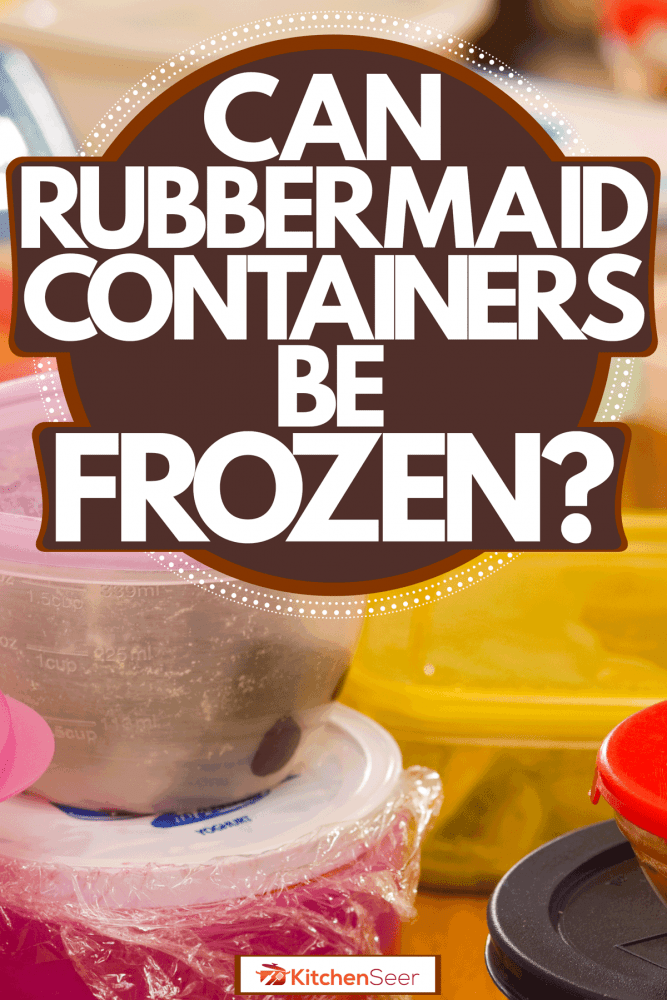
Can you freeze things in plastic containers?
The biggest factor in freezer storage is a tight lid to prevent any air exposure. You can freeze anything from meats, non-water-based fruits, and vegetables to cookie dough or premade stock by freezing. For all the meal planners, busy parents, and college students storing meals, make sure cooked food is completely cooled down before putting it in the freezer. Trapped heat will form condensation and affect the overall quality when it’s time to reheat.
Plastic Containers
To make freezer storage easier, use plastic containers with grooves and ridges, such as Rubbermaid Easy Find Lids. Using a plastic container with grooves made for stacking will make organizing your freezer easier than ever! You will be able to stack large and heavy items on the bottom and securely stack lighter and smaller containers on top of those.
Click here to see Rubbermaid's Easy Find Lids Set on Amazon.
Use freezer durable tape that won’t lose its tack to label containers. Labels should include the date food was prepared and/or packaged and what is inside. By doing so, you’ll be able to pick and choose with ease exactly what you’re looking for instead of guessing what could be inside.
Check out "How To Organize Glass Food Storage Containers [4 Crucial Tips]" for more great packaging tips!
Heavy Duty Wraps
You can alternatively use freezer strength plastic wrap and tin (or aluminum) foil. If using plastic wrap not specified for freezers, wrap your food tightly with at least two layers. Another option is wrapping it once in plastic wrap and then doing a second layer with tin foil. To label food items wrapped in foil or plastic, you can use a permanent marker to write directly on it as an alternative to tape.
Does Tupperware crack in the freezer?
Frozen water expands, and if a Tupperware container is too full, there is a possibility of it cracking from over expansion. It is a recommended rule of thumb when freezing liquid contents to leave about ½ inch to ¾ inch between the food and container lid. Using thicker plastic containers versus flimsy take-out containers or paper cartons will hold the best results for your frozen goods.
How do you defrost frozen Tupperware?
Frozen Tupperware will need to thaw overnight in the refrigerator before setting it out at room temperature. This step ensures even thawing, slow expansion, and maintaining a safe food temperature range throughout the de-frosting process. Make sure to place your frozen container on a lipped pan or in a deep bowl to catch any runoff condensation. This will save you from having to clean your refrigerator shelves later!
Are Ziplock bags safe for freezing?
Grocery aisles can be overwhelming with all the different options for food storage. For freezer storage, in particular, you will need to purchase Ziplock bags are specifically made for freezer use.
Bags can be just as safe and space-saving as containers. This storage method also makes it easier to get all the air out to keep your food fresher longer. There are two common techniques: you can either roll or fold the bag on the countertop or press it against yourself to push the air out and seal. Once all the air is out and the bags are flat, you can stack one on top of the other!
Check out "Are Ziploc Bags Airtight? [And how to make them so]" for more great tips on using plastic food storage bags.
Why does my food have freezer burn?
Freezer burn can happen with well-prepared packaging. It is identified by the growth of ice crystals, inside the packaging, directly on your stored foods. When containers or bags are not properly sealed or still have air pockets left inside them, the food inside loses its natural moisture. From this dehydration, food becomes dry and tough, and in most situations, as seen on meat, it can also change the color often from red to brown.
Using airtight bags, double wrapping and tightly sealed lids are the best defenses to prevent freezer burn and save you the costly damage of having to throw away ruined food.
It is better to freeze food in glass or plastic?
If you are more eco-conscious and want to keep your plastic use to a minimum, glass containers are a good alternative. You can use both glass and plastic for proper freezer storage, but here are some key factors to consider:
Type of glass
Not just any type of glass will survive in the cold. Glass containers should be made from durable tempered glass. Tempered glass such as Pyrex or Rubbermaid Brilliance containers will not shatter when food has completely frozen.
Porous Vs. Non-Porous Materials
Porous materials have the ability to absorb the color and smell of whatever is touching them. Non-Porous materials have a tighter structure that does not allow the contents to penetrate as easily. Thin plastic containers can be porous and absorb color and scent from food left too long in them. Non-Porous contains such as glass or thick plastic won’t discolor or scratch as readily.
In closing
Storing extra food in the freezer can be time and money-saving. One of the more affordable plastic containers, Rubbermaid, is safe to freeze and stackable to maximize freezer space. Plastic containers can be used alongside heavy-duty wraps and glass storage containers to freeze food for long-term storage. Keeping your freezer organized and labeled will help you easily find items and make the most of your time.


![Glass and plastic Tupperware containers, How To Clean Tupperware Oil Containers [6 Helpful Cleaning Solutions]](https://kitchenseer.com/wp-content/uploads/2022/06/Glass-and-plastic-tupperware-containers-250x250.jpg)
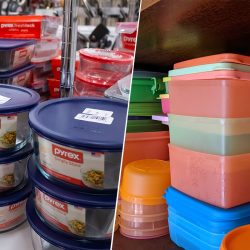
![A set of tupperware products on a dark background, How To Get Stains Out Of Tupperware [3 easy methods]](https://kitchenseer.com/wp-content/uploads/2020/09/A-set-of-tupperware-products-on-a-dark-background-250x250.jpg)
